Over the past few years Deb and I have spent many early weekend mornings in June travelling about sixty kilometres from the cottage to Algonquin Provincial Park and then paddling a couple of kilometres in order to observe and photograph the Common Loon. June is typically the month that Loons are nesting and for the first few days after the chicks are born they spend a lot of time on their parent’s back providing a very desirable photo opportunity.
Loons are an amazing bird God designed to live on the water. They have solid bones and legs that are positioned far back on their bodies allowing them to dive and swim underwater with incredible speed and agility at recorded depths of more than 120 feet. Their design is so tailored to water that they are quite dysfunctional on land where they can only move around by a hopping and pushing themselves on their chest. They are unable to achieve flight from the ground and are only on land while nesting for the 26-31 day incubation period before their eggs hatch. Both parents share in the incubation responsibilities. Loons build their nests on the water’s edge so that they can gain access to it direct fly from the water and the young chicks can easily transition to the water; which they do the day they are born, never to return to the nest. Below is a typical nest located on a small ‘island’ not much bigger than the nest, located about twenty feet from shore and creating an important barrier to protect against predators.
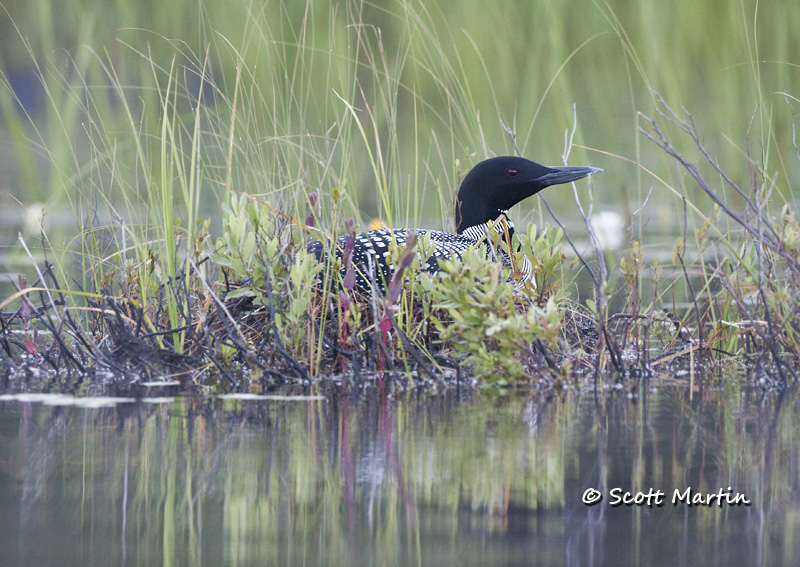
As the Loon chicks move onto the water within hours of their birth, their small size and lack of development requires that they spend much time on a parent’s back for the first week of life. This allows them to rest and keep warm. They also float around on the water, always within a few feet of one of the parents. The parents keep within sight of each other and attend to the young by bringing small fry to them on a seemingly systematic schedule.
They are a pleasure to watch, and the effort required to see Loons up close is always worth it.
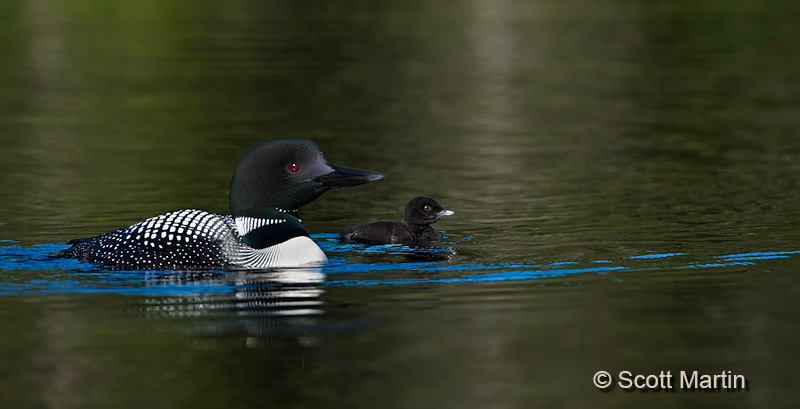
.
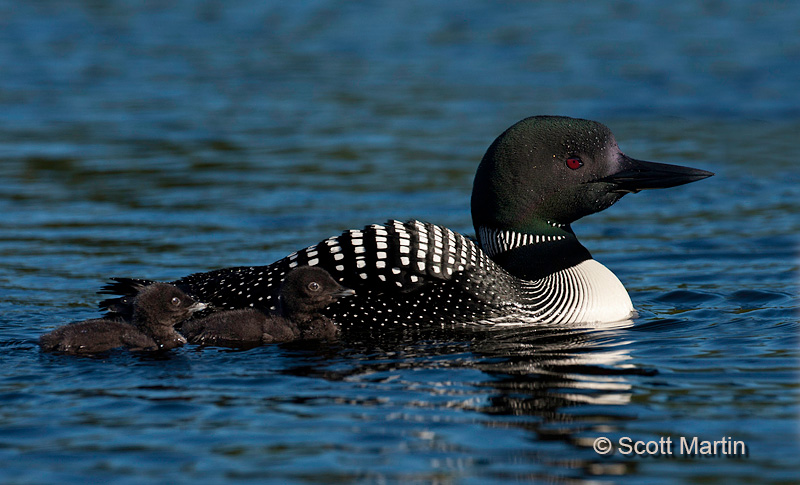
.
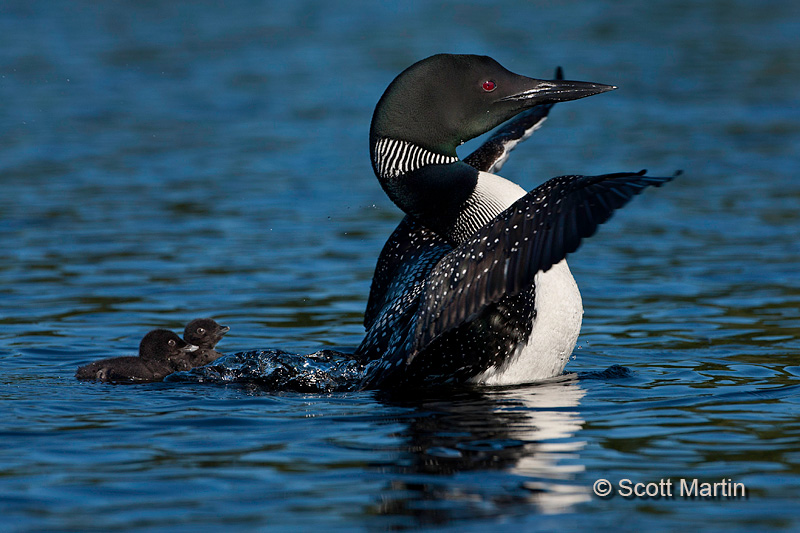
Watching the young chicks get fed is the prefect time to see the special bond between parent and offspring.
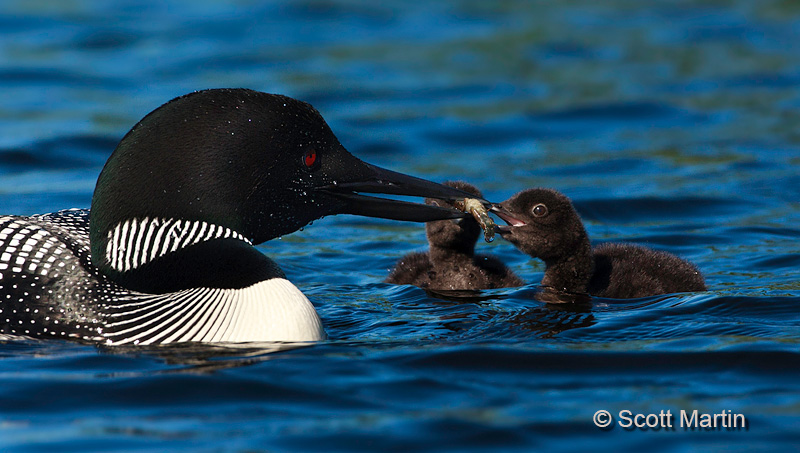
.
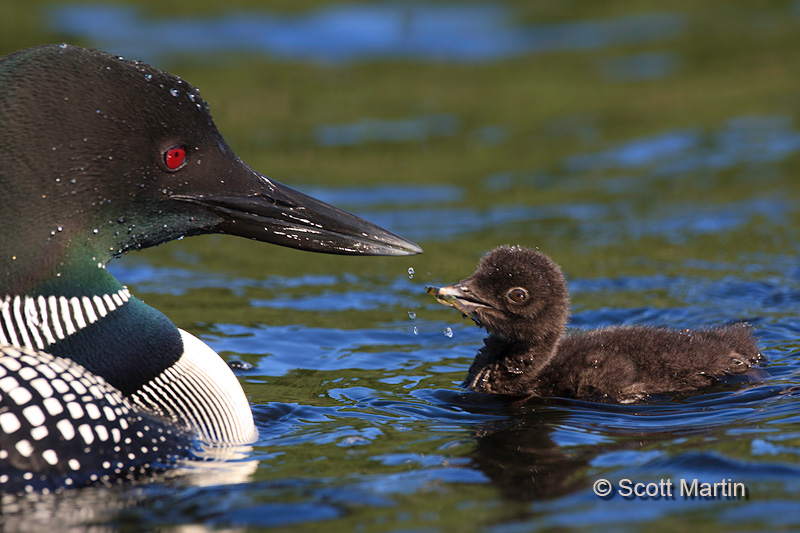
.
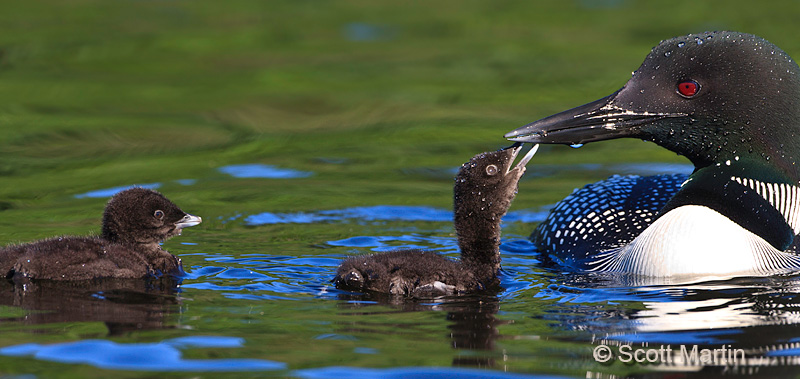
.

.
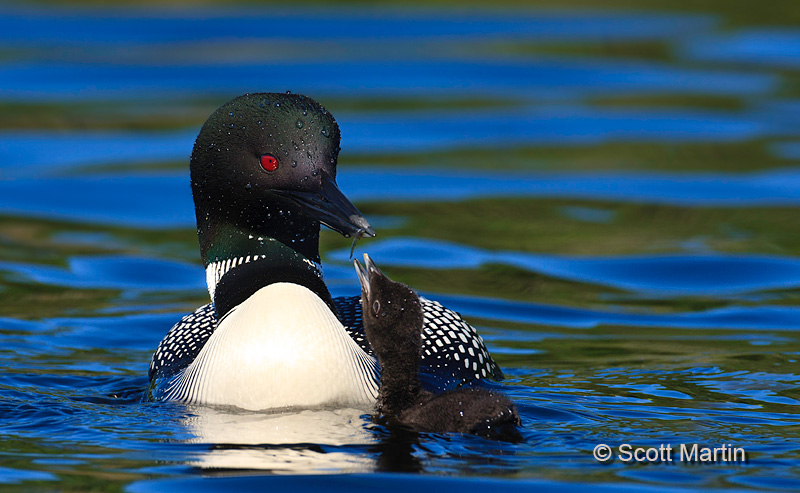
.
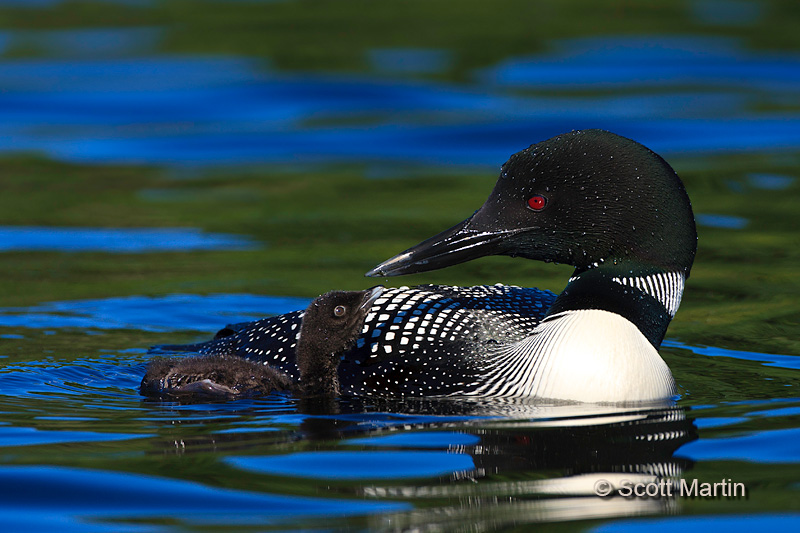
To see the chicks resting on a parent’s back and being sheltered, warmed and protected under a wing was something we’d been hoping to see for the past number of years so the following images are among our all time favourites.
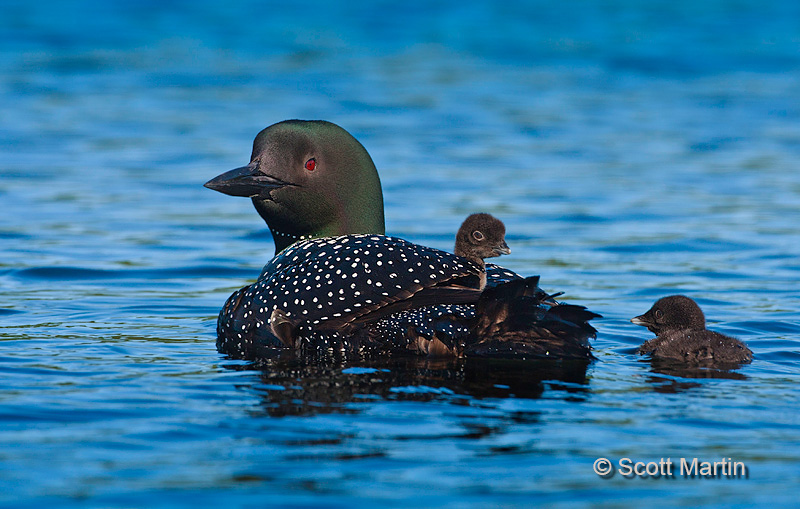
.
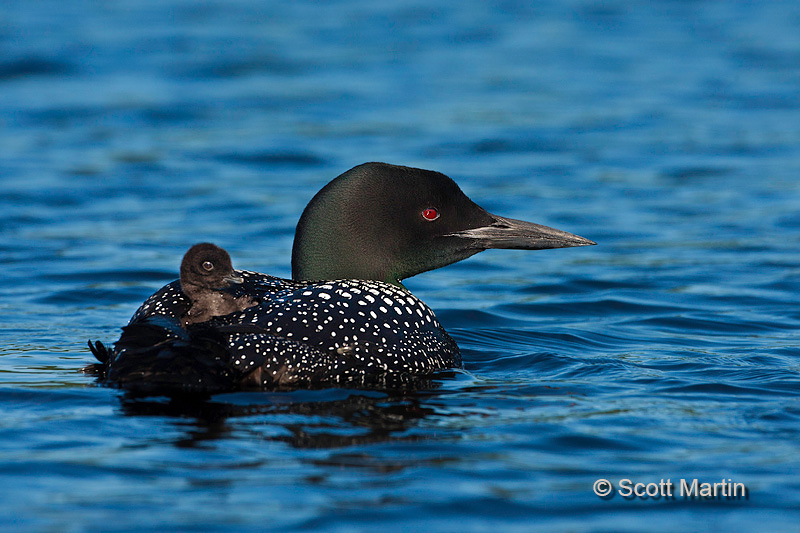
One of the chicks launching off mom’s back.
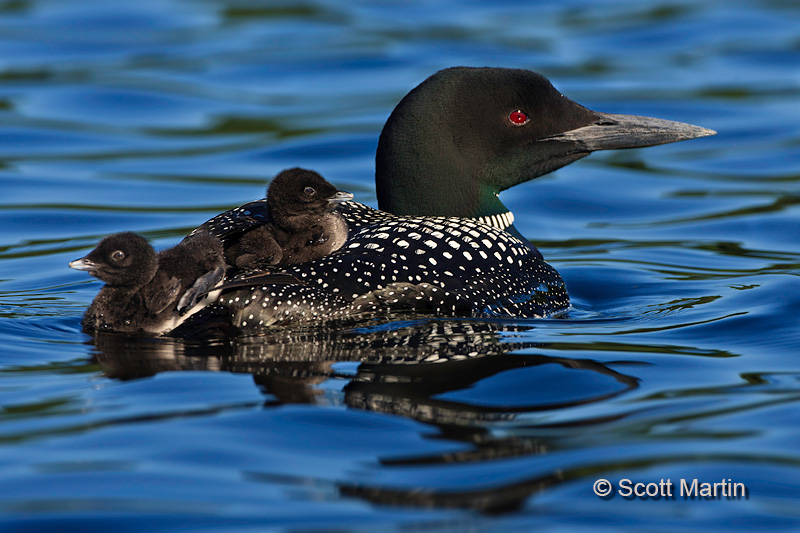
.
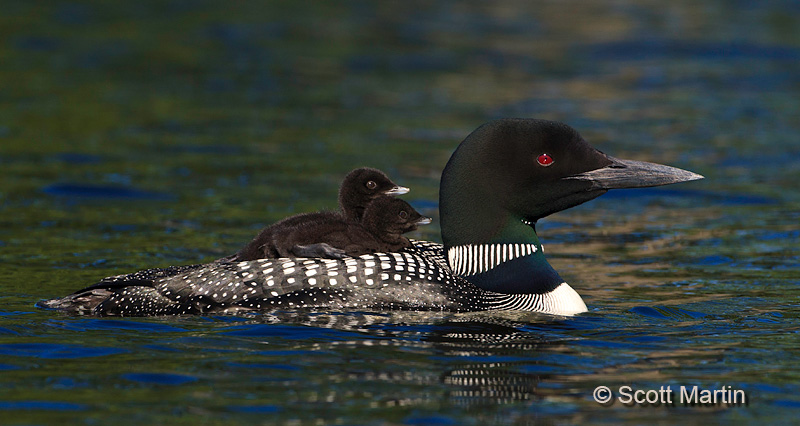
.
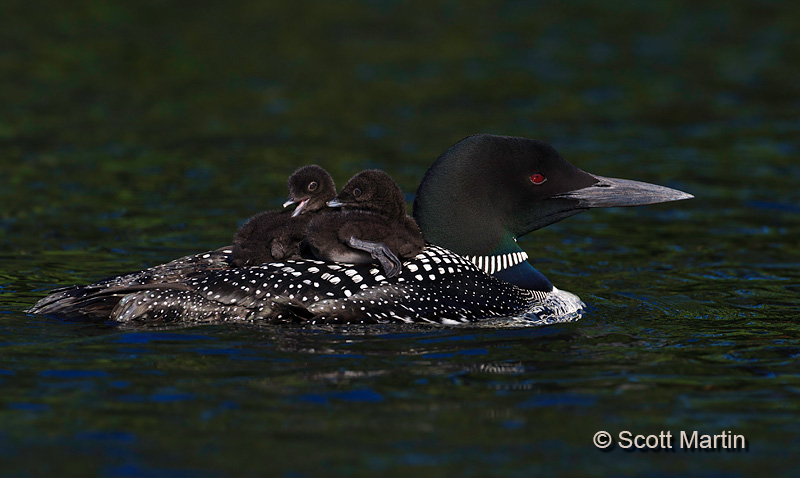
.
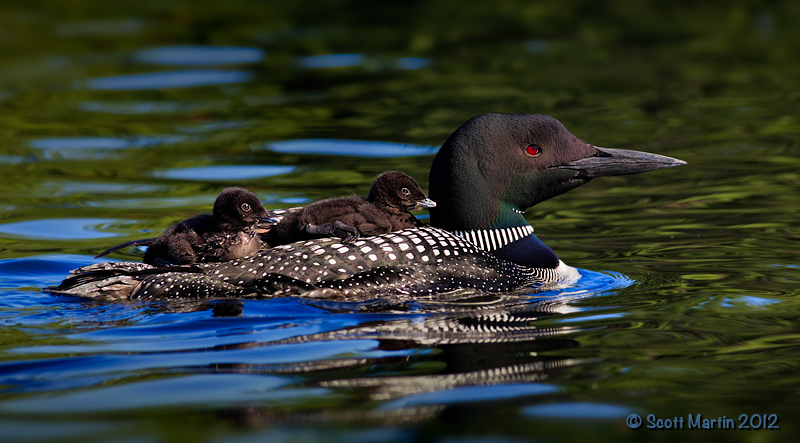
“Hey some day you will be able to do this too”!
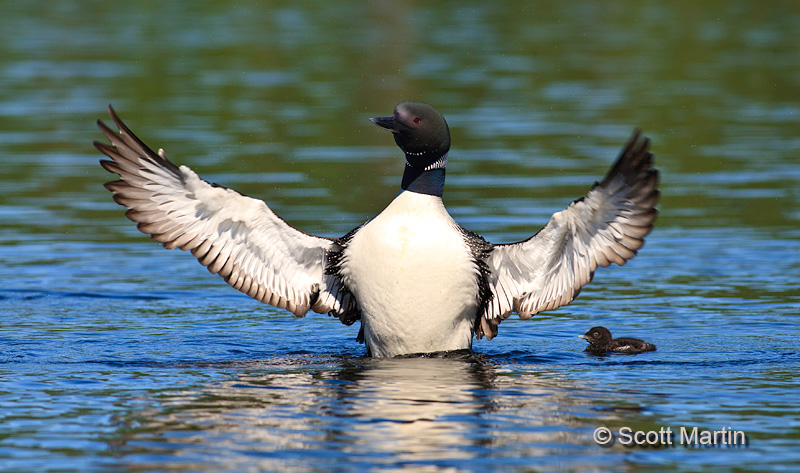
Family shot.
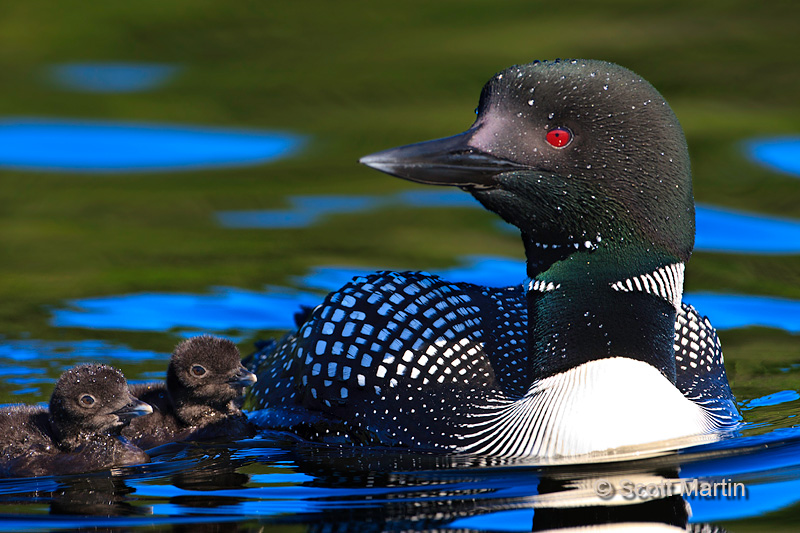
Although it’s a bit precarious taking lots of expensive camera gear in a canoe and quite a challenge to photograph from one, there are not many other ways to get close to Loons. All the images in this post were taken hand-held from a canoe with either a Canon 1D MK III & EF 500mm f4 L IS lens or a Canon 5D MK III and EF 400mm f5.6 L lens. I must thank Deb for single-handedly paddling and positioning the canoe so that the light was always right as we followed these Loons for about three hours. We are a great team but she does all of the work while I snap pictures!
If interested, more images can be seen in the Loons & Grebes Gallery
Please take the time to leave a comment as they are always appreciated and if you have any questions please don’t hesitate to ask.


OMG..these are fantastic photos of the loons and chicks. My husband & I went to Algonquin in mid July this year hoping to see the loon chicks on their mom’s back, but alas we were too late, the chicks we saw were at least 2-3 weeks old (if my guess is right). I never tire watching them, and I become so enraged at hearing stories about people killing them for sport.
Scott, do you mind telling me what polarizer filter you were using, if any?
Hi Ingrid and thanks for taking time to comment. You will have to plan next year’s trip to the park a couple of weeks earlier. These chicks were three or four days old (they are usually born the last week of June) and only stay on the parents back for about a week. I was not using a polarizing filter for any of these shots, but they were taken easily in the morning when the harsh reflections are not as bad. I’m glad you enjoyed the pics.
Hello Mr & Mrs Martin
What amazing photographs of the loons!
May I say something on our blog about them with a link to your website?
Sincerely
Theresa
Arowhon Pines
That would be great Theresa and thanks very much.
Great shots Scott!
Thanks Greg!
I am a loon fan and have visited Algonquin Park. Have only seen loons from afar. Not knowing more about cameras than make and model, do you use telephoto lenses? These are fantastic photos. Thanks!
Thanks for your comments Candy. These shots were all taken from a canoe using either a 400mm or 500mm lens. The Loons actually came right up to the canoe a number of times which was amazing.
I LOVE your pictures … You have an amazing talent … Way to go…
Thanks Ehab, great to hear from you and I’m glad you enjoyed the Loon pictures.
You have done a amazing job, awesome pics and so wonderful to read that thy are our Lord’s handy work. I have been blessed with a camera and we spend much of the spring and fall in the park and of course never see the loon babies. Is it early July when the babies are born?
Thanks for your comments Kim and I’m glad you enjoy the park too. The Loons are more likely born towards the end of June and by July are no longer spending time on a parent’s back. You can usually get specific information in the spring by calling the naturalist at the park office and they can help you observe some Loons.
Exceptional series of images Scott! I guess you don’t have to take anymore Loon shots, how can you top these? Kudos to Deb for navigating especially since I suspect she was in the front of the canoe which makes the task that much harder. Thanks for sharing!
Thanks Arni, but don’t worry, we’ll keep trying for better images next spring. In the mean time, we’ll be concentrating on Loon in flight shots. You are right about Deb being in the bow and she did a fabulous job on boat control.
Oh my! Scott/Deb … These are some of the most beautiful loon shots I have ever seen. Thank you for sharing your gift!
Thanks Karen, glad you enjoyed them and thanks for taking the time to comment.
God is amazing! So intricate in His design. Great pics dad!! You captured some truly amazing images. I like what you said about mom 🙂 love you! 88
Love you too Lou! Mom’s the best!
I have heard so many stories and have been sleeping at the cottage when you guys were going out on these adventures. These are so awesome! Great pictures!
Glad you liked them Cam. Next time I’ll wake you up so you can come too!
These are amazing pictures Scott!! I could look at them all day!
Thanks Dad, glad you like them. Too bad we don’t have any on Mary Lake anymore.
Incredible shots!
Thanks Lisa. We hope to see you at the cottage soon.
Wonderful series. Thanks for sharing. Kudos to your lighting person too! 😉
Thank you Mark and I really enjoyed looking around Phaeton Place. Great photography and blog.
Fabulous shots Deb & Scott. You make a fantastic team. To see shots like these makes me marvel at creation. To see the way that the family interacts is indeed specual. Thanks for sharing the experience
Thanks Rob and we can only be amazed by God’s handiwork.